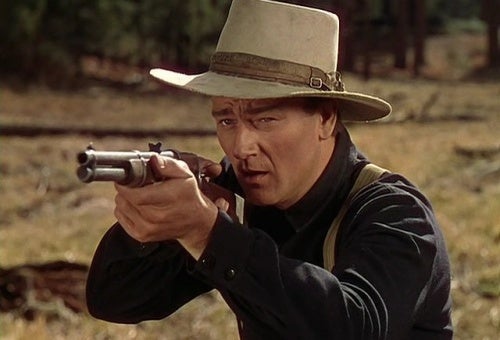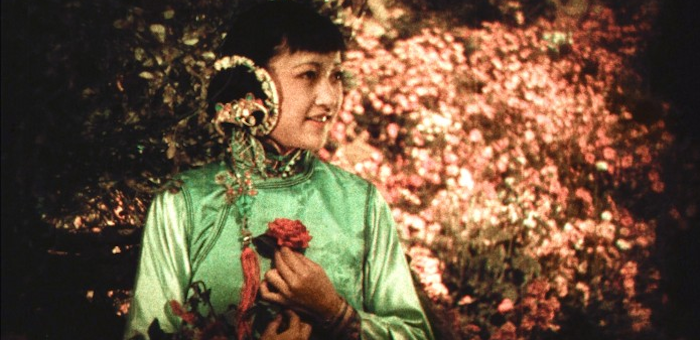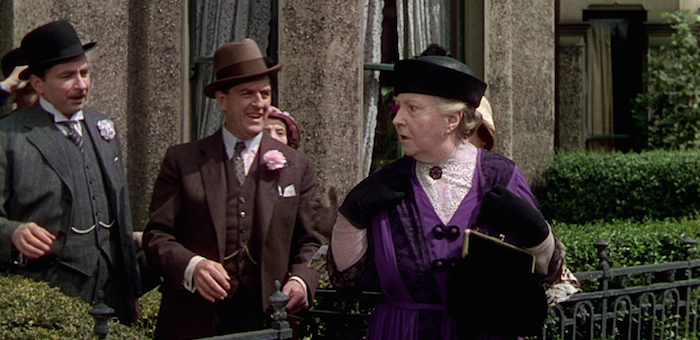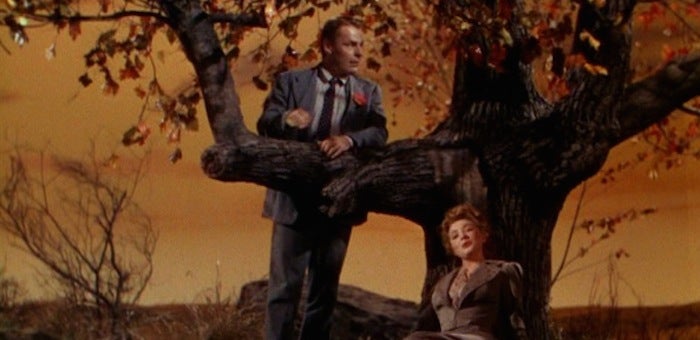
The Shepherd of the Hills (1941)
In celebration of the centenary of Technicolor, the Deutsche Kinemathek in Berlin staged the retrospective program “Glorious Technicolor” at this year’s Berlinale film festival. Consisting of 25 American and six British films, made between 1923 and 1953, the retrospective began with UCLA Film & Television Archive’s preserved print of The Toll of the Sea (1922) and ended with The African Queen (1951). Within those parameters, the program featured well-worn classics, such as Snow White and the Seven Dwarfs (1937), Gone With the Wind (1939), She Wore a Yellow Ribbon (1949), and Gentlemen Prefer Blondes (1953), as well as lesser-known features, like Redskin (1929) and Black Narcissus (1947). Focusing on the primary genres of Technicolor pictures – adventure films, animation, historical epics, musicals and westerns – the organizers sought to not only demonstrate the technical and aesthetic qualities of original, surviving 35mm Technicolor IB prints, but also how the Technicolor aesthetic may survive in the digital era of DCPs and digital restorations. Most of the screenings were extremely well attended by local Berlin audiences, who would seldom have an opportunity to see these films on a big screen, while foreign guests and professionals were noticeably absent, possibly because the great majority of the selections are readily available classics.

The Toll of the Sea (1922)
The first event I attended was not a film screening, but rather a panel on Technicolor restoration which featured Rainer Rother (Artistic Director, Deutsche Kinemathek), Schawn Belston (Director of Preservation, 20th Century-Fox), Paolo Cherchi Usai (Senior Curator, George Eastman House), Ulrich Ruedel (Conservator, BFI), Martin Koerber (Assistant Director, Deutsche Kinemathek) and Barbara Fluckiger (Professor, University of Zurich). Interestingly, while there was much discussion about restoring Technicolor, all the panelists more or less agreed with Cherchi Usai that restoring Technicolor is actually a technical impossibility, since: 1. neither analog nor digital technologies can create the specific look of imbibition printing, 2. no two surviving Technicolor IB prints of the same film ever look alike, and 3. even if they did, the projection technology (carbon arc, zenon) would throw the colors off. Finally, digital restoration, in particular, drastically sharpens up the Technicolor image, which was necessarily soft because of the bi-packing of two negatives in the 3-strip Technicolor negative. Much of this was already familiar to me, but I was happy to support my archival colleagues.

This Happy Breed (1944)
Shuttling back and forth between the Berlinale Competition, the Generation youth program and the Retrospective, I was able to see four Technicolor films in the week. First up was David Lean's 1944 ode to British particularity, This Happy Breed, starring Robert Newton and photographed by Ronald Neame. The story of one lower-middle class British family between the two World Wars, the film quietly celebrates normal lives with all their everyday ups and downs, rather than the earth-shaking events that bookend the film. In keeping with the film’s aesthetic of visualizing a microcosm drained of drama, Lean severely limits his color palette to ochres, browns, mustard yellows and shades of London grey. Certainly a propaganda film, made at a moment when victory was within grasp and thoughts were turning to postwar reconstruction, but almost modern in its lack of melodrama. The DCP was produced from a 2008 BFI digital restoration.

An American Romance (1944)
In contrast, director King Vidor’s An American Romance (1944) was a much more obvious propaganda film, although made, like Lean’s film, with an eye to the postwar period. Starring Brian Donlevy and Ann Richards, the former playing an illiterate, Slavic immigrant who walks from Ellis Island to the iron ore fields of Minnesota, and eventually rises to the heights of American capital as a car and – after Pearl Harbor – airplane manufacturer. Another family history, but one that celebrates the Horatio Alger myth and American industrial might in the 20th century, filled with big gestures and dramatic set pieces. In keeping with the romance of his title, Vidor’s color is also bright and saturated with orange sunsets, yellow-white steel blast furnaces, steely blue-grey assembly lines. The 35mm Tech IB print from George Eastman House was of exceptional quality.
I had seen Broken Arrow (1950), director Delmar Daves’ revisionist western before, but not on a big screen and not as a DCP digital restoration by 20th Century-Fox. Starring James Stewart as the peacemaker between the Apache chief, Cochise (Jeff Chandler), and the U.S. Cavalry, the film earnestly attempts to “humanize” Native Americans, countering decades of vicious Hollywood stereotypes by demonstrating that Indians have families, too, and want to live in peace. Daves’ use of color is therefore appropriately realistic, toning down desert and mountain hues, as well as steering clear of bright exotic Indian costuming. On the other hand, true to stereotype, the woman of color (played by Debra Paget in red face) who falls for Stewart’s scout must be sacrificed, thus guaranteeing the peace and eliminating any threat of miscegenation.
Finally, I discovered Henry Hathaway’s The Shepherd of the Hills (1941), starring John Wayne in his first color film, and Harry Carey. The story of an Ozark mountain blood feud, the film was based on a popular novel by Harold Wright, which Paramount had previously adapted in 1918 and 1928. Despite the high melodrama such material could engender, Hathaway downplays the Sturm und Drang, sticking to low contrast colors of the beautiful mountain landscape (actually most shot at Big Bear, CA), reducing his musical soundscape to a bare minimum, and cutting away from the climactic battle. UCLA’s 35mm Tech IB print, one of five original IB’s in the retrospective, showed some wear, but was gratefully accepted by the audience.
Glorious Technicolor is also the name of a beautifully illustrated (all color!) catalog, unfortunately available only in German.
< Back to Archival Spaces blog






 Mobile Navigation
Mobile Navigation

